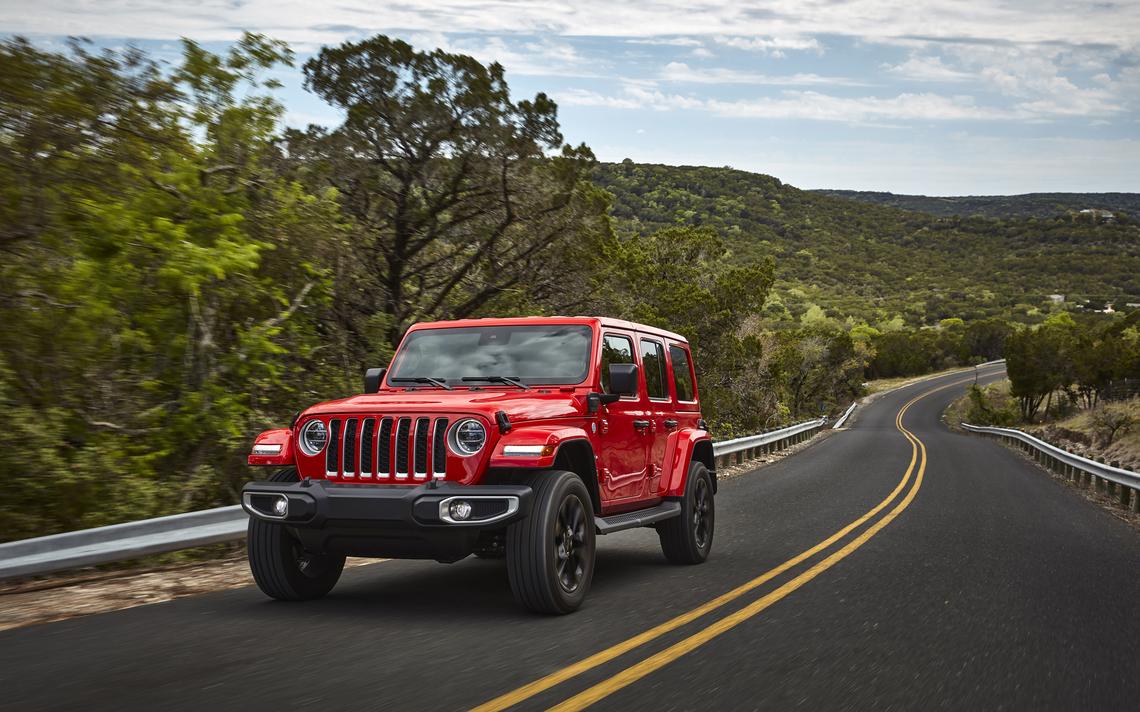There, perched next to it on the fender, is the plug to recharge the 400-volt, 17-kWh, 96-cell lithium-ion battery pack, a chore that requires a mere two hours with a 240-volt outlet, or an endless 12 hours using 110 volts.
They’re paired to a turbocharged 2.0-liter double-overhead-cam four-cylinder engine, used in the wrangler since 2018, and an eight-speed automatic transmission that produces 375 horsepower and 470 pound-feet of torque.
The hybrid driveline and its added weight, most of it low in the chassis, provides an unexpected benefit; the Wrangler 4xe feels surprisingly planted at high speeds, something you’d never say of its siblings.
In addition, the driveline can be fine-tuned using the hybrid driving mode, a pure electric driving mode or an E-Save driving mode.
And despite not using a brake pedal, the brake lights come on if deceleration is strong enough.
And don’t be fooled by the EPA ratings of 20 mpg in combined highway mode; an hour-and-a-half mix of city/suburban/highway driving west of Austin, without any attempt to hyper-mile, returned 25 mpg — not bad for a vehicle with the aerodynamics of a brick.
The Wrangler’s other powertrains lack the sensitivity that 4xe’s provides; throttle response is ideal, affording confidence in the trickiest of situations, like the 32-degree departure angle down the side of a rock that the 4xe dispatched with ease.
Yet the EPA states that the cost to fuel the 4xe over five years will save you a mere $1,000, meaning it will take you 6.6 to 7.4 years before you’ll see any additional fuel economy savings.
